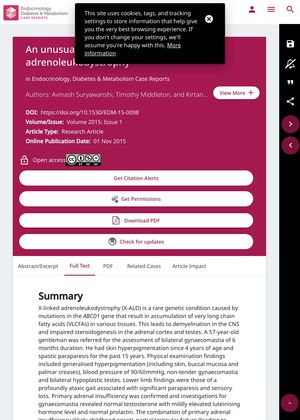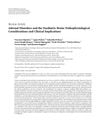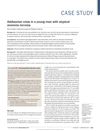An Unusual Presentation of X-Linked Adrenoleukodystrophy
November 2015
in “
Endocrinology, Diabetes & Metabolism Case Reports
”

TLDR A man with X-ALD improved after treatment, highlighting the need to consider X-ALD in similar patients and test their relatives.
In 2015, a case study was conducted on a 57-year-old man diagnosed with X-linked adrenoleukodystrophy (X-ALD), a rare genetic condition caused by mutations in the ABCD1 gene. The patient had symptoms like skin hyperpigmentation, spastic paraparesis, and bilateral gynaecomastia. Diagnosis was confirmed through a serum very long chain fatty acids (VLCFAs) panel and genetic testing. After treatment with replacement doses of corticosteroid, the patient's condition improved. The study emphasized the importance of considering X-ALD in patients with non-autoimmune primary adrenal insufficiency and neurological abnormalities, and the need for genetic testing in family members of patients with X-ALD to detect pre-symptomatic female heterozygotes and prevent disease transmission.




